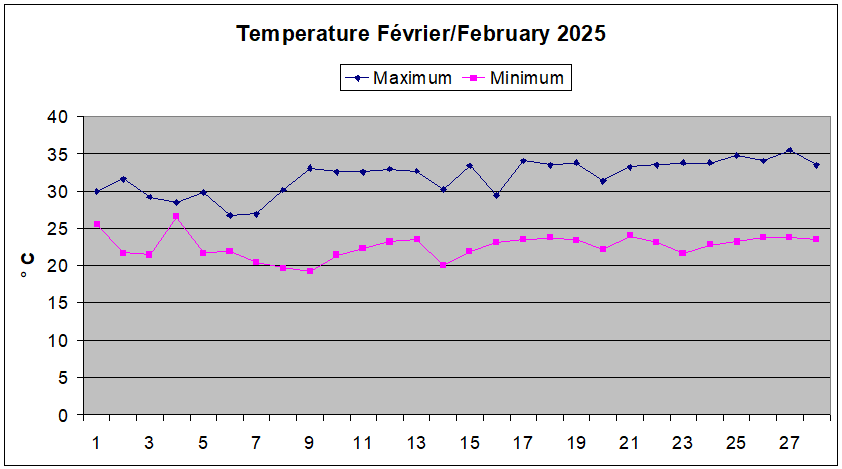

February is generally dry, often described as the small dry season. The temperatures remained quite high for this altitude. In fact the weather was often cloudy in the morning and clear in the afternoon, under a rather overwhelming sun.
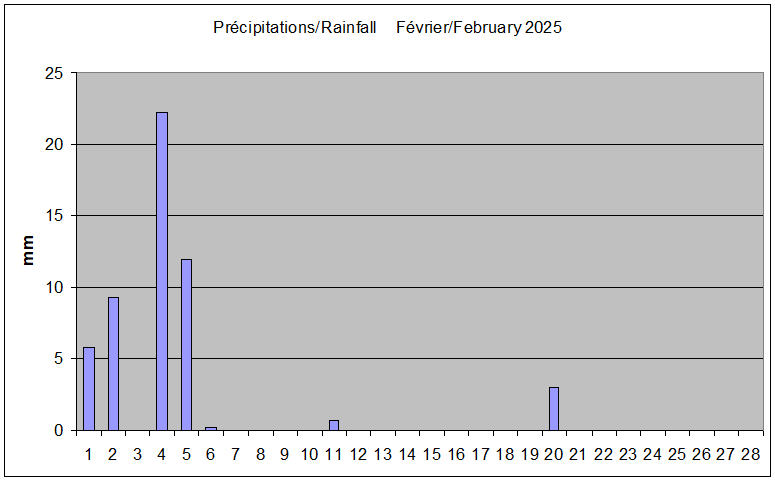
Some rains, but scarce. January was dry enough also the maize received little water, as witnessed by the photos below. We are talking here about rods like "rolled cigarettes", cigarettes that we roll thin enough (misokoto).
No tree orders were placed, farmers waiting for the rains of March to order.
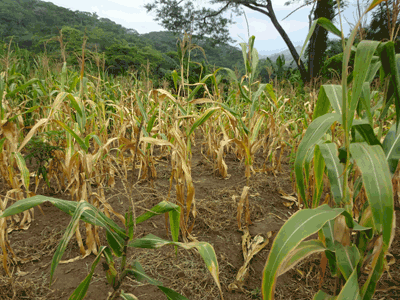
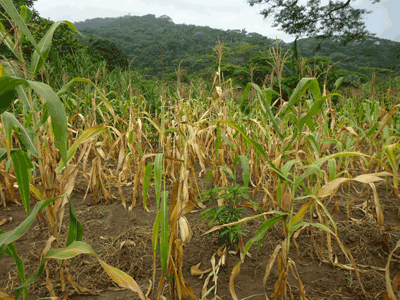
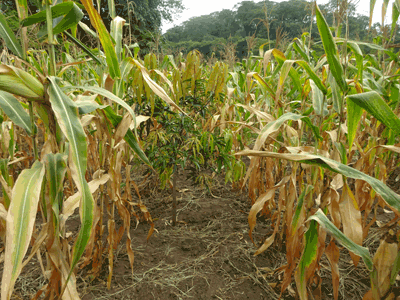
The ears are thin, poorly supplied. The village of Chabima, in
fact was watered more than in plain. Corn shortages are expected in
December, at the time of the lean period.
In the Shuleni juu test field near the village, we have sown
maize between the trees planted last year. This allows also maintain
vegetation cover and slow down evaporation. In the centre of the photo,
a mango tree of the blood mango type.
We acquired a plot of land in a small valley giving on the valley of Chole, which we have baptized Chole juu, that is to say Upper Chole. This ground is more fertile than the one we had borrowed from Luka, who decided to plant corn between the trees, without ask us for our opinion. About an acre was planted with different species : mango trees of course, but also peaches, apple trees, pear trees, grapes, a macadamia tree, pomegranates, cashew trees, avocado trees, palm oil tree, coconut trees, a bread tree, mulberries, orange trees, lemon trees, tangerines ... As a cover plant, for the moment melons, but soon watermelons.
Rains having been scarce in late January and February, and even early March, I had to water the newly planted plants. Then I mulched the base of plants to keep moisture.
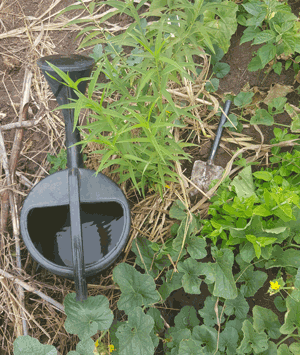
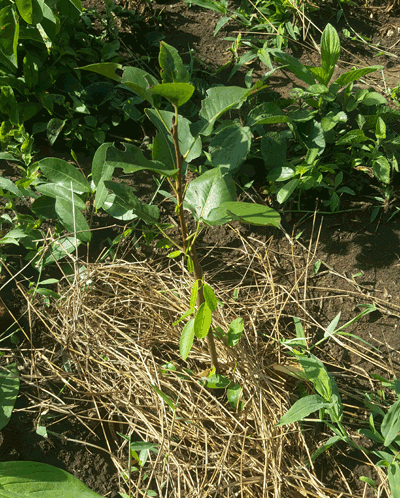
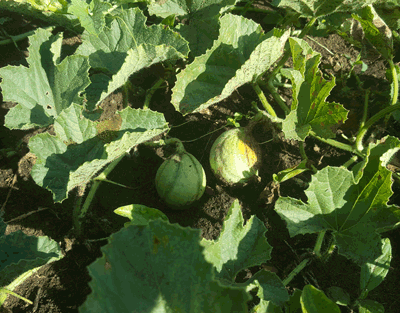

The peach was mulched. Melons help to retain humidity. To the right an apple tree.
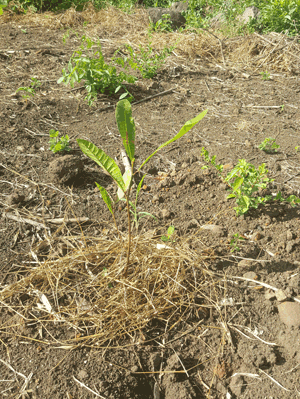
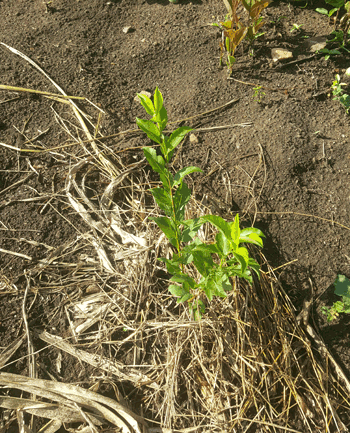
The avocado tree was mulched, as well as the orange tree
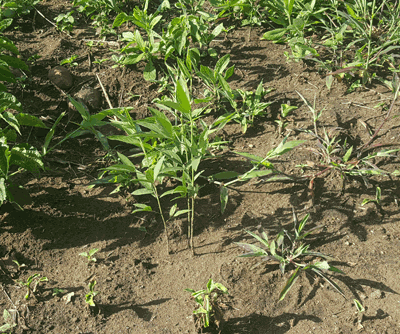
Pigeon pea is a legume that can grow up to three meters tall, a
shrub therefore. It produces kinds of beans, also called Angola peas. It
lives only two years, and is used to shade the young plants. As a
legume, it enriches the soil with nitrogen.
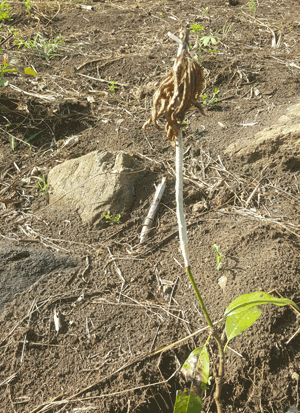 Despite my
precautions, the journey by bus, especially in small buses of Dumila to
Kilosa, did not avoid the scalping of several mango trees. The grafted
extremity had dried, but if the mango tree has taken root, it is the
rootstock which survived, a carrier of small very juicy mangoes but
fibrous. The three concerned mango trees have been replaced.
Despite my
precautions, the journey by bus, especially in small buses of Dumila to
Kilosa, did not avoid the scalping of several mango trees. The grafted
extremity had dried, but if the mango tree has taken root, it is the
rootstock which survived, a carrier of small very juicy mangoes but
fibrous. The three concerned mango trees have been replaced.